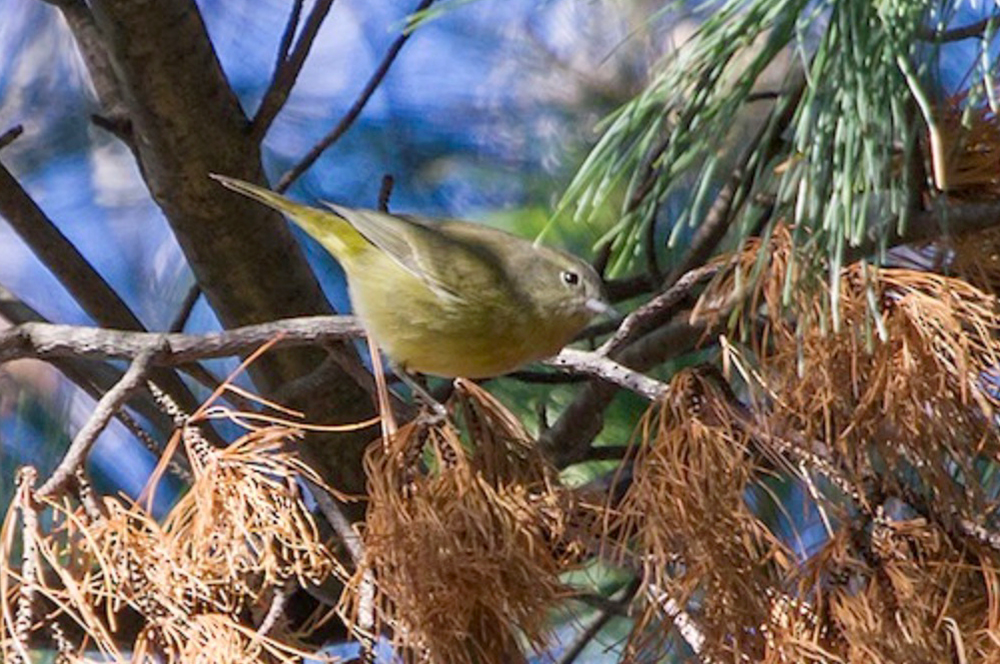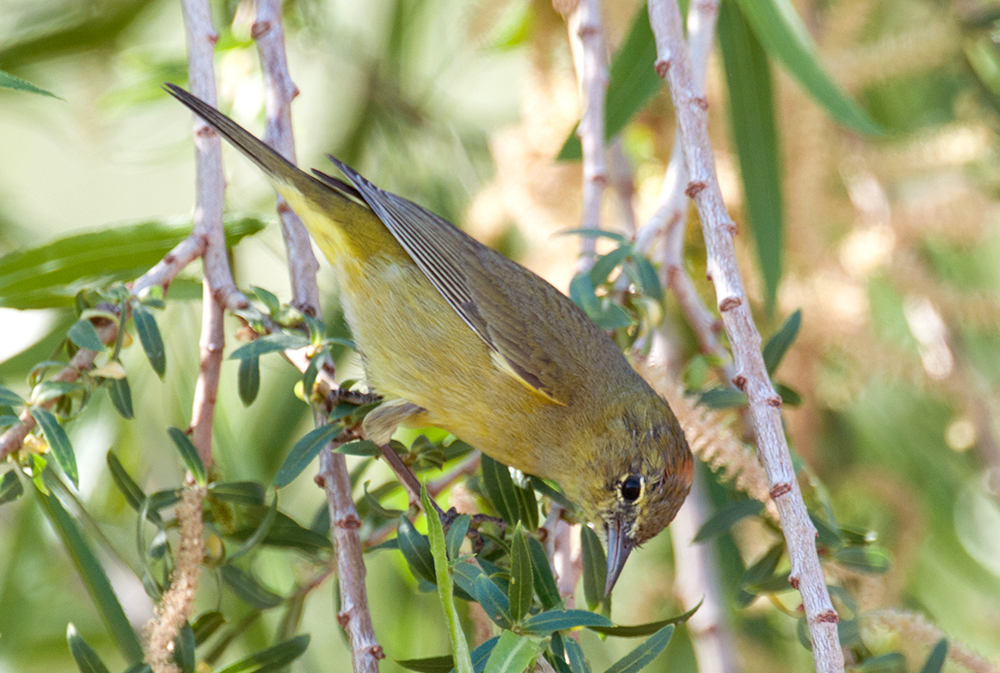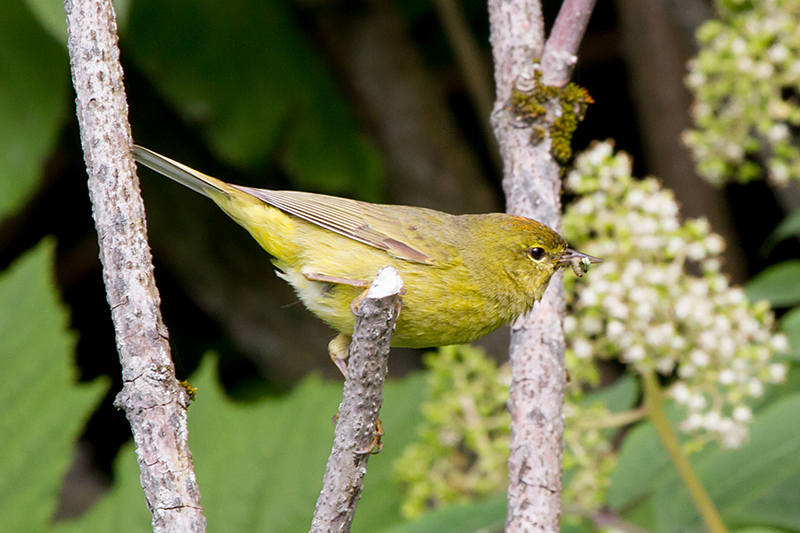| Infrequently Seen |
Spring: Orange-crowned Warblers are common in western North America, but not at all common in much of the East, especially during the spring. In the Washington metro area, you are more likely to see one during the winter. Only one has ever been seen at Monticello Park during the spring. They are never easy to find, but you have a chance to see one during the winter at LBJ Grove along the George Washington Parkway, or at Jones Point in Alexandria.
Fall: Only one Orange-crowned Warbler has ever been recorded at Monticello Park during fall migration.
Where to See Them in the Park
Orange-crowned Warblers are so uncommon that there is no good place to look for them at Monticello.
Physical Description

From a distance, Orange-crowned Warblers are drab olive birds who look like a confusing fall warbler. The key fieldmarks are the yellow undertail coverts (the feathers under the tail), the broken eyering, the faint white line over the eye, and the faint streaking on the breast. There are four races of Orange-crowned Warblers. The hoods of the various races range from gray to olive, and not all races show an eyeline. The sexes have similar plumage.


As unlikely as it is to see an Orange-crowned Warbler at Monticello, it is even unlikelier that you will see the orange crown, which is usually hidden.
Vocalizations
The song of Orange-crowned Warblers is as nondescript as their plumage. It is a two-part trill that drops in the second part, and it can be confused with the songs of other species. You are not likely to hear the song at Monticello Park. The different races have different songs.
Hear the song of the Orange-crowned Warbler.
Notes
The Orange-crowned Warbler has four different races. The race most commonly seen in the eastern United States has the subspecies name celata, which is the same as the scientific species name. The celata subspecies is found across all of Canada and into Alaska.
Origin of Names
Common Name: Orange-crowned from the orange feathers on its head. The New World Warblers were named for their similar appearance to European warblers, to whom they are not related. Most of the New World warblers do not warble (sing continuously with notes that change frequently).
Genus Name: Oreothlypis means a small mountain bird.
Species Name: Celata means concealed, from the orange crown that is rarely visible.
Orange-crowned Warbler video footage
Return to the Index
